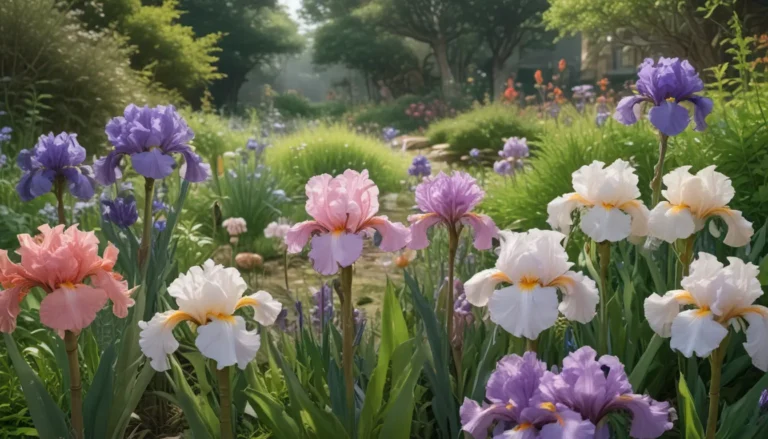A Comprehensive Guide to Growing Plum Trees from Pits

If you’ve ever found yourself enjoying a delicious plum and wondered if you could grow a new tree from the pit, you’re not alone. Whether you’re a curious gardener, looking for a fun project for the family, or hoping to cultivate a wild plum species, using a plum pit to grow a new tree is a possibility worth exploring.
In this guide, we will delve into the process of growing plum trees from pits, covering everything from preparing the seeds to transplanting your new tree. So, if you’re ready to embark on this exciting endeavor, grab your gardening tools and let’s get started!
What You’ll Learn
- Is It Possible to Grow Plums from Pits?
- Preparing the Seeds
- Potting Up
- Transplanting
Before we begin, let’s establish some basic botanical terminology. Plums fall under the category of stone fruits or drupes, consisting of the fleshy mesocarp and the exocarp skin. Inside the pit lies the seed, enclosed by the hard endocarp.
Unlike some plant species that burst open to release seeds, plum drupes require the shell to decompose naturally or be eaten by animals for the seed’s release. Understanding this natural process is crucial when attempting to grow plum trees from pits.
Is It Possible to Grow Plums from Pits?
While it is indeed possible to grow plum trees from pits, there are some important considerations to keep in mind. Seeds from grocery store plums or hybrid varieties may be sterile, leading to unpredictable results in the new tree’s characteristics.
Japanese and European plum varieties are often hybrids grown on grafted roots, meaning the seeds inside these fruits may not produce trees resembling the parent plant. On the other hand, wild plum species like American, beach, Canadian, or peachbush plums are more likely to yield trees similar to the parent through seed propagation.
In summary, growing plum trees from pits is ideal for those seeking a unique plant-growing experience rather than a predictable orchard harvest.
Preparing the Seeds
Preparing plum seeds for germination requires patience and attention to detail. Start the process about four months before planting, as some seeds may be duds or require multiple attempts.
After removing the pit from the fruit and cleaning it thoroughly, consider using a toothbrush or veggie brush to remove any remaining flesh. While the endocarp does not require opening, some gardeners choose to soak the pit in room temperature water for 24 hours before gently cracking it open with a nutcracker.
Next, simulate winter conditions for the seed through stratification in the refrigerator. Wrap the seed in several layers of moist paper towel, place it in a labeled plastic bag, and refrigerate for at least two to three months. Monitor the moisture level during this period to ensure successful germination.
Once the endocarp cracks open, roots begin to develop, indicating the seed’s readiness for planting.
Potting Up
As soon as the seeds sprout, transfer them to four-inch pots filled with a water-retentive potting mix. Ensure the potting mix offers a balance of nutrients and moisture, such as Tank’s Pro Coco-Soil Potting Mix from Arbico Organics.
Plant the sprouted seed with its roots facing downwards, keeping the soil moist and providing sufficient sunlight indoors or outdoors. Gradually introduce the young seedlings to extended sunlight exposure as they grow to ensure successful development.
Transplanting
Transplanting your plum seedlings should be done in the spring or fall to avoid winter or summer stress on the delicate plants. Select a suitable location, dig a hole, and carefully plant the seedling at the same depth as its container.
After filling the hole with soil and watering thoroughly, monitor the plant’s growth and provide necessary care following established guidelines for growing plums.
Growing Plum Seeds is Definitely Not The Pits
While commercial plum propagation methods have evolved to prioritize predictability and productivity, growing plum trees from pits offers a unique and rewarding experience for enthusiastic gardeners.
Whether you’re starting a new tree for family fun or cultivating a native species, understanding the nuances of seed propagation is key to success. So, if you’re ready to embrace the excitement of growing plum trees from pits, follow these steps and enjoy the journey!
Let us know what type of tree you’re starting and share your experiences in the comments below. And for additional insights on plum growing, explore our guides on pruning techniques, pest management, and disease prevention in fruit trees.
Embrace the joy of growing your own plum trees from pits and watch your garden flourish with unique, handcrafted fruit trees that tell a story of patience and dedication.
Remember, every seed holds the potential for a lush and bountiful tree – all it needs is a nurturing hand to guide it towards growth and prosperity in your garden.





